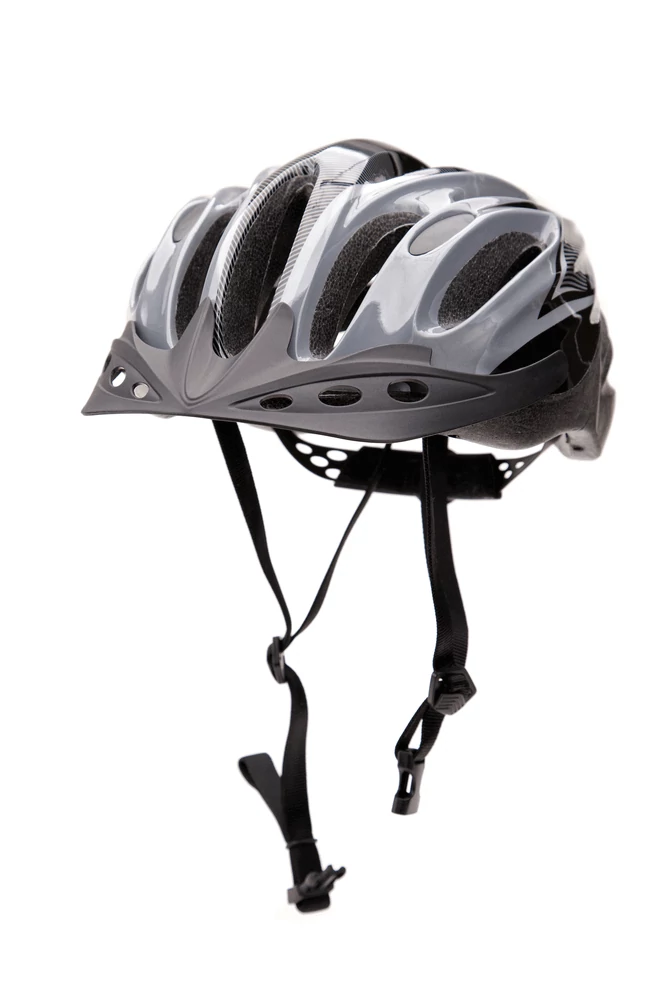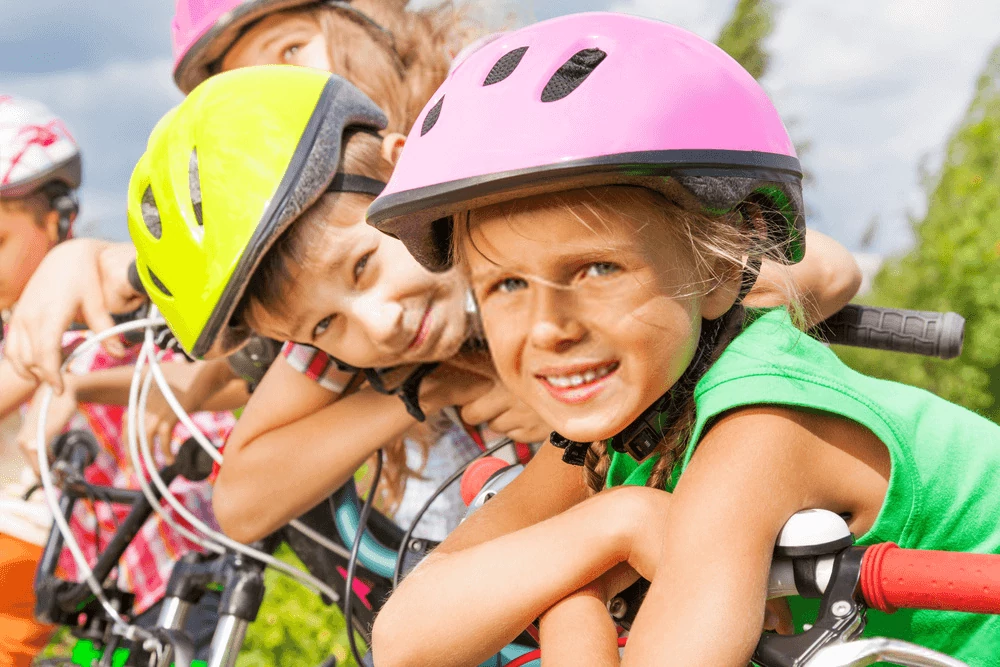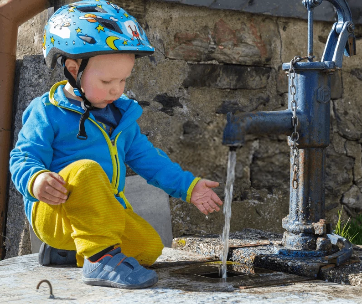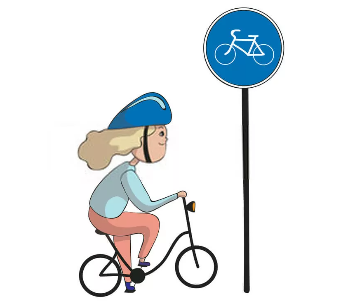Riding a bike, especially at a young age, is a thrilling experience. It brings some sense of triumph and autonomy to the kids. Nevertheless, one mistake can prove cycling is a dangerous activity for kids if safety precautions are not observed. It is mandatory for parents to understand how to fit a bike helmet for a child.
We are passionate to teach parents and guardians everything to do with wearing a toddler bike helmet. We aim to minimize injuries and hospital visits. Bike injuries are very costly both economically and physically. Wearing a helmet is the first safety precaution a child should know even before knowing how to ride. With helmets on, kids can cushion losses and maintain their cycling thrill.
In this article, we address the common question of what is the proper way to wear a bike helmet. We also advise you on how tight a bike helmet for kids should be and whether or not toddlers need helmets for tricycles. Stay tuned, entertained, and informed.
Do Kids Need to Wear Helmets?
This is a question that parents new to cycling stuff regularly ask. We insist that wearing a helmet is mandatory for every child who is riding a bicycle or a scooter.
Helmets protect the kid’s heads in case of a severe fall that can otherwise cause brain damage. A properly fitting helmet reduces the risks to the child. No parent wants their child to be among the daunting statistics of bike deaths or injuries.
Caution: A helmet is not a safety gear you buy for a child to fit into later as they grow. Instead, a helmet should fit the child at the moment when it is purchased.
Therefore, wearing a helmet is just one safety precaution, the other one is ensuring it fits properly to the head of the child.
Depending on where you reside, wearing a helmet is guided by the law. Besides, bike accidents and falls are unpredictable. This adage always fits: prevention is better than cure!
How to get a Child to Wear a Helmet
Children love taking instructions. When doing so, avoid yelling at them. Instead, use the following steps to get a toddler to put on a helmet.
1. Every time you are riding a bike, ensure you wear a helmet. Kids always consider their parents their role models. Become the best, in this case.
2. Teach the children how to wear a bike helmet. When training the children, remind them of the helmet habit. You can look for documentaries and demonstrations on the importance of helmets when cycling.
3. Never let the children cycle without wearing helmets.
4. Involve your child in choosing the best bike helmets for kids. Children have a particular taste that we adults lack.
5. Reward the kids for remembering to wear helmets without your guidance.
6. Encourage friends to your kids to wear their helmets.
Step-by-Step Approach to a Correct Bike Helmet Fit for a Child
Although many parents and guardians think that helmets are one-size-fits-all, helmets are designed to fit different heads. In our extensive reviews, we have not only covered how to select the best helmet, looking for different nitty gritty to land the best, but we have also categorized helmets as per age, gender, and use.
1. First Step: The Size of the Helmet
Always check on the size of the helmet. Sizing your child for a bike helmet is simple. Simply take a string, shoelace, or tape measure and measure the circumference of your child’s head. This should be just above their eyebrows and around their forehead. The circumference should be in centimeters.
Compare the measurement to the helmet manufacturer's sizing guide, table, or chart for an appropriate and fitting bike helmet for your toddler or child.
Nevertheless, if you cannot access the kid’s measurement, you can use a general guideline that is guided by age.
2. Second Step: The Helmet should be Comfy
Helmets come with a universal fit ring and helmet/sizing pads. Mostly, the sizing pads are exclusively for skate-style helmets. However, the cycling helmets come with both or just the universal fit ring.
The universal fit ring is located behind the helmet. It is used in loosening or tightening the helmet when in position on the head. Always, adjust the ring carefully until when the child can comfortably shake as well as roll their head with the helmet remaining in position.
Geometrically, the front of the helmet should align with your child's eyebrows, just above. This is the same place you use to measure the circumference. It should sit low in the child’s forehead, two finger-widths above the eyebrow.
Ensure that the child can look upwards and be able to see the rim of their front wheel with the helmet on. Any tilt backward or forth should be an indication of the helmet being big or poorly fit.
3. Third Step: Adjusting the Side Straps

Most parents are worried about how to adjust the bike helmet straps. It is pretty simple. The right and left side straps of the helmet should form a “Y” shape that meets right below the child’s ear.
Always adjust the straps when the helmet is off the head. Some people prefer when it is on the head. Whichever your choice is, the aim is always to adjust the right fit for the side straps.
To do so, roll the little rubber band stopper towards the side straps-it prevents any slip.
4. Fourth Step: Fine-tuning the Chin Strap
For a helmet to be fit for a child’s head, always tighten the chin strap. Only when it is moderately snug can you be sure the helmet is in a good position. Use your finger to measure the space under the chin strap. Not more than one finger should fit in that space.
If there is an extra strap hanging from the chin strap, you can trim it or find a way of making it shorter. It can be a nuisance. A few inches remaining is just good enough. You can burn and fold the end to avoid the destruction of the remaining bit.
5. Step 5: Check to Ascertain Everything is in Position
When a child wears a helmet, you should continuously monitor them. Some kids are fond of playing with the chin strap until it loosens. Other kids can be obstinate enough to adjust the universal fit ring on the back of their helmets for fun.
Here is what you need to check frequently.
- Is the chin strap tight and in position? Use your finger to measure the space under the chin strap; only one finger should fit.
- Does the bike helmet fit on your kids' heads? Tell the child to open their mouths wide. If it does not pull down on the head, it is not fit, and the chin strap has to be re-adjusted.
- Positioning. Tell the child to look up and ask them to look at the rim of the front wheel. If they cannot see it, the side and chin straps need to be readjusted as well.
- Is the helmet covering the eyes? Work on the chin and side straps until in position.
- Slipping of the helmet when shaking the kids' heads. Use the sizing pads to ensure a comfy fitting helmet. Also, adjust the ring until the helmet is snug.
- Do the helmet fit test. According to safekids.org, ensure that you do a fit test for the helmet regularly.
How to Check the Fit of a Helmet
We insist that a snug bike helmet will do its job protecting your kids’ heads in case of accidents. However, like sneakers, the helmets are constructed on different molds and vary depending on the brand. But unlike shoes, which come in standard measurements, helmets have a range of had circumference that can fit into them. Your kid’s head might be extra small, medium, or small, and that can help you narrow it down to the best bike helmet for your toddlers, babies, or kids.
So, you need to check the fit of your kid’s helmet, and here is the right way to do it:
1. Ensure that the helmet is level on their head.
2. The front edge of the helmet should be at least an inch above your kid’s eyebrows. This position should be achieved after the straps are fastened. Try pushing the front edge of the helmet firmly, and if it moves back, the straps are loose.
3. Push the helmet sideways and back and forth. It should be snug such that the movement wrinkles the skin of your kid at the temples.
4. If your daughter has a ponytail, make sure they test the helmet wearing the same hairstyle that they are likely to ride with mostly.
5. Test whether the buckled-up strap is tight enough by making the kid open their mouth halfway. If it presses down on top of their heads as they open their mouths, it is snugly fit.
6. Ensure that the front and back straps make a V-shape that meets below the ears in the forward direction.
7. Grab the back tip and pull it up over the top of their head to the front. If the front of the kids’ helmet falls, ensure that you shorten the back straps.
And that is how to ensure you achieve maximum safety when your kids wear a helmet. Check out this video that explains the process succinctly and concisely.
Helmets should be stored indoors and should be cleaned to avoid foul smells and infections. When cleaning, use a mild detergent and warm water. DO NOT soak a kids' helmet. Also, a single helmet cannot be used for multiple sporting activities. CPSC certified and stamped helmets are for use when cycling.
Related articles
1. Best kids' bike helmets for any age plus buying guide
2. Best helmets for young girls who ride bikes
3. Full-face kid's bike helmets for BMX and MTB
4. Best bike helmets for toddlers and infants (smaller heads)
How to Care for a Bike Helmet
As technology advances, things get better. The modern helmet gracefully bows to a similar trend. It can handle most of the astonishing forces. At the same time, it might be fragile than it appears to be when a crash occurs.
To make the most out of your helmet, here are some wonderful tips on how to care for a helmet:
1. Store the helmet properly: with kids, the chances of getting helmets placed anywhere in the house are high. However, you can supervise and ensure that the helmets are stored away from heat. So, storage in a car’s trunk, in the kitchen, or outside is a bad idea as it reads. Ensure the helmets are stored in cool and dry places.
2. Never expose a helmet to chemicals: The integrity of the plastic shell and the foam on the helmet can get damaged upon chemical exposure. Therefore, avoid using harsh chemicals such as bleaches, ammonia, or decorating it with any paint as that will potentially degrade the constructing materials and compromise its safety.
3. Never accessorize a helmet: We are fond of action cameras on helmets- and kids love it by the way. However, adhesives and straps used could compromise the integrity of a helmet- making it a health hazard.
4. Replace a helmet after a crash: This is a top precaution that you should keenly observe. Each helmet is designed for a single impact. After that, thinking or planning for a new helmet is the best thing to do. The rationale is simple – even in small crashes, detecting damages is hard. Likewise, replace old helmets – those that you’ve used for 3-5 years.
Remember, treating a helmet rightly is important for it to achieve its life cycle and offer the safety it is meant to.
How often should One Replace a Bike Helmet?
Generally, helmets are made using different safety standards. Check for Snell Memorial Foundation and CPSC or AST stamps on the helmets before purchase. There is always an expiration confusion for bike helmets.
Notably, most parents always ask “, how often should I replace my kid’s helmet?” or, “for how long is a helmet safe?” Well, most manufacturers suggest that you replace a helmet every 3 years. Still, there are some who market the helmets as one to last and be replaced in 5-8 years.
Always consult with the manufacturer of your kid’s helmet on the expiration date of the helmets. However, as soon as a helmet has cracks on the outer shell, it should be replaced.
If there are also dents and crevices on the foam liner, it is high time the helmet got a replacement. Thus, any helmet involved in an accident should be replaced.
Do not wait to see cracks or dents; the falls are enough to affect the integrity of the materials used to make helmets.
Also, the fading of the plastic cover due to UV exposure is a telltale sign for replacement. Finally, when a child outgrows a helmet, it should be replaced immediately with the right fit.
Conclusion
Rising is a fun activity. You can have family riding activities or let the kids participate in balance bike races. However, safety comes before even thinking of buying and training your kids to ride a bike.
A helmet is just one safety gear, ensure your child has the right gloves, hydration packs, knee and elbow pads, and clothing. Loose clothing is a health hazard when cycling. If it is your daughter, align their hair well to let them see clearly.
When riding a scooter, ensure the child has a fitting helmet. Kids under 18 years need supervision when wearing helmets. Bikes are vehicles, remind the kids to observe the traffic rules. It is a good chance to teach them some discipline on the road at a tender age.
We teach you how to fit a bike helmet for a child to avoid losses and adverse occurrences. You can only make sure a bike helmet fits your kid by wearing it right. It should be low, level on your head, and comfy. Remember, if it does not fit, do not waste time and money buying it.
Always get the right bike helmets for kids. We recommend helmets with MIPS Technology. Although they are expensive, their quality is always incomparable.





Comments